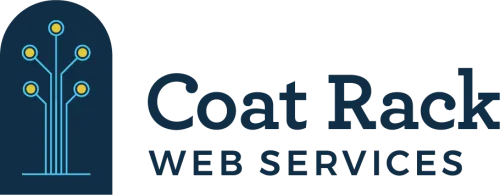May 28, 2025
Nonprofits are always looking for better ways to connect with donors, run smarter campaigns, and use their time effectively. Yet many still rely on spreadsheets, scattered emails, and notes just to stay organized.
That's why more than 67% of charities now use CRM software to manage donor interactions and contributions. The shift isn't just about keeping better records—it's about working smarter. A CRM for nonprofits helps simplify complex tasks, centralize data, and guide decision-making.
In this blog, we'll break down how CRMs improve fundraising efficiency, support better nonprofit data management, and help organizations set and achieve realistic fundraising benchmarks.
Why a CRM for Nonprofits Is Essential for Growth
As nonprofits grow, so do their needs. Manual systems can't keep up. That's where CRMs shine. A CRM for nonprofits becomes a reliable management system that scales with your organization. Instead of scattered records and miscommunication, everyone works from one platform. This improves collaboration and reduces costly mistakes.
It also makes reporting easier and more accurate. Real-time data helps teams identify giving trends and make better strategic decisions that directly improve fundraising efficiency.
A CRM does more than store contacts—it helps nonprofits manage daily tasks and improve fundraising operations through better organization and automation.
Top nonprofit CRM features include:
-
Unlimited contact records to manage every constituent
-
Custom reports for sharing performance
-
Easy integration with payment processing and outreach tools
-
Built-in moves management and communication workflow
-
Tools to update donor data across your team
With all your data in one place, teams have the tools they need to move faster and save time.
How Better Nonprofit Data Management Leads to Donor Insights
Good data management helps nonprofits do more than just organize information. It provides the foundation for understanding donor behavior, improving outreach, and building stronger relationships. A nonprofit CRM organizes your data in ways that reveal patterns, habits, and opportunities you might otherwise miss. From tracking contributions to personalizing outreach, each element plays a role in building lasting connections and driving smarter fundraising decisions.
Here's how better nonprofit data management through a CRM leads to real, actionable donor insights—and supports a more personalized experience for donors:
1. Donation History Tracking
See exactly how much each supporter has given over time. This helps you segment donors into groups like first-time, recurring, or major givers.
2. Communication Logs
Track every email, call, or meeting in one place. This avoids repetition, streamlines your workflow, and supports better moves management strategies.
3. Campaign Performance Metrics
Know what's working. CRMs show which fundraising campaigns raise the most funds or get the highest engagement rates, helping you make the most of your analytics.
4. Automated Flags for Lapsed Donors
Quickly identify donors who haven't given recently. Use this data to trigger re-engagement messages.
5. Personalized Outreach
Use donor data to personalize messages. A quick "thank you" email that mentions a past donation goes a long way.
With strong nonprofit data management, teams stop guessing and start making smarter decisions. Effective nonprofit data management helps organizations see what works, adjust strategies, and build stronger relationships—key steps toward better fundraising efficiency and setting clear, data-driven fundraising benchmarks.
Measuring Your Fundraising Efficiency Against Industry Standards
To understand how well your fundraising efforts are performing, you need a baseline to measure against. This is where industry benchmarks come in. Metrics like donor retention, email open rates, and cost to raise a dollar are standard across the sector. When nonprofits measure these metrics using CRM data, they gain clarity on where they stand and what needs to improve.
A CRM for nonprofits makes this process easier. It tracks campaign performance automatically and presents data in a format that aligns with industry standards. This allows nonprofit teams to spot strengths, fix weaknesses, and set goals with confidence.
Here's a comparison table that illustrates key metrics nonprofits can track with a CRM and how they stack up against commonly accepted benchmarks:
|
Metric |
Industry Standard |
What CRM Helps You Do |
|
Donor Retention Rate |
40-45% (average) |
Track yearly donor return rates |
|
Cost to Raise $1 |
$0.20 to $0.35 |
Analyze campaign spending vs. return |
|
Email Open Rate |
15-25% |
Monitor real-time email performance |
|
First-Time Donor Conversion |
20-30% |
Track follow-up results |
|
Recurring Donation Sign-Ups |
5-10% of total donors |
Measure monthly giving program growth |
By connecting CRM data with these benchmarks, nonprofits can understand how they compare, identify gaps in fundraising efficiency, and celebrate where they're leading.
Setting Realistic Fundraising Benchmarks with CRM Data
Setting realistic fundraising benchmarks is key to managing your nonprofit's growth. Without clear targets, it becomes difficult to measure progress or identify what needs to change. Benchmarks help you define success in a way that is specific, trackable, and tailored to your goals. A CRM for nonprofits plays a central role in this process by organizing historical data, surfacing key metrics, and enabling informed goal-setting.
Here's a step-by-step process for using a CRM for nonprofits to set the right fundraising benchmarks for your team:
Step 1: Pull a Report on Past Campaigns
Review past donation totals, open rates, and new donor sign-ups to set a starting point.
Step 2: Segment by Donor Type
Organize your data by donor category—new, recurring, and major—for better clarity.
Step 3: Identify Top-Performing Campaigns
Pinpoint which campaigns performed best by looking at channels, timing, and message.
Step 4: Set Benchmarks Based on Real Numbers
Use past data to set goals like increasing retention or boosting recurring donations.
Step 5: Track Progress in Real Time
Monitor results with CRM dashboards and reports to stay on track and adjust as needed.
This approach keeps goals grounded in reality. It helps you measure fundraising efficiency at each stage and make changes based on what the data shows. With this clarity, your team can refine fundraising benchmarks and set more ambitious, achievable goals. Strong nonprofit data management ensures those decisions are well-informed and backed by accurate reporting.
Ready to Unlock the Full Power of Your Fundraising Data?
We know how hard it can be to manage donor relationships, run campaigns, and keep up with reports—all while trying to grow your mission. That's why Coat Rack helps nonprofits set up easy-to-use systems that organize data, track results, and make it easier to set and reach important fundraising benchmarks.
If you're ready to make your work easier and reach more supporters, contact Coat Rack today. We're here to help your organization succeed.



